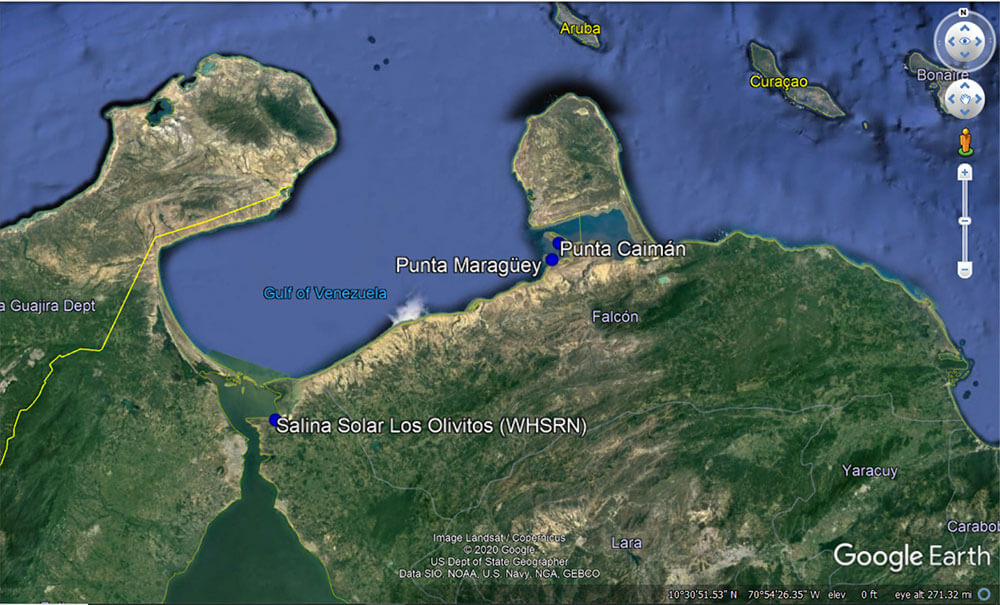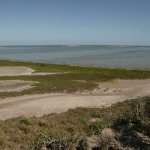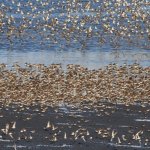By: Sandra B. Giner F. Tropical Zoology and Ecology Institute, Central University of Venezuela
The western coast of Venezuela consists of numerous coastal wetlands characterized by shallow lagoons, large areas of marshland with swampy zones and the presence of sand bars. Shorebirds arrive to these habitats during the spring and autumn migrations, where they find sites appropriate for feeding and roosting.
Punta Maragüey and Punta Caimán are two sandbars that extend southeast to northeast from the coast, and which are formed by sedimentation at the mouth of the Mitare River in the western gulf of Coro. Both have large intertidal mudflats, bordered to the west by mangroves that are dominated by Black Mangrove (Avicennia germinans), and with a sandbar to the east that separates the intertidal area from the sandy beach.
These sites receive large concentrations of shorebirds of various species, including rufa Red Knot (Calidris canutus rufa), Wilson’s Plover (Charadrius wilsonia wilsonia) and Whimbrel (Numenius phaeopus) which arrive to refuel with the energy and nutrients necessary to continue with their annual migration.
Unfortunately, these sites are currently threatened because of their location close to two petrol refineries, Punta Cardón and Amuay in southwestern Paraguaná. The presence of submarine and terrestrial oil and gas pipes in the region also represents an environmental danger.
Researchers from the Institute of Zoology and Tropical Ecology at the Universidad Central de Venezuela (Instituto de Zoología y Ecología Tropical de la Universidad Central de Venezuela), the Venezuelan Institute of Scientific Investigation (Instituto Venezolano de Investigaciones Científicas) and the Executive Office of the Western Hemisphere Shorebird Reserve Network (WHSRN) have been doing surveys at both sites since 2018, with support from the Canadian Ministry of the Environment and Climate Change (ECCC). This monitoring has allowed confirmation of the fact that several species of shorebirds are present in sufficient abundance as to exceed 1% of their biogeographic population, including Red Knot, Black-bellied Plover (Pluvialis squatarola) and Wilson’s Plover. Banded individuals of Red Knot and Wilson’s Plover have also been observed, which came from on the east coast of the United States.
One young individual of Whimbrel that was Satellite tagged as part of a Manomet shorebird tracking study was registered. This individual was from Cape Cod, Massachusetts, and arrived at the southern coast of Paraguaná in August 2017 before later moving to Punta Maragüey, stay for 921 days straight until April 2020, moving periodically between this site and Punta Caimán.
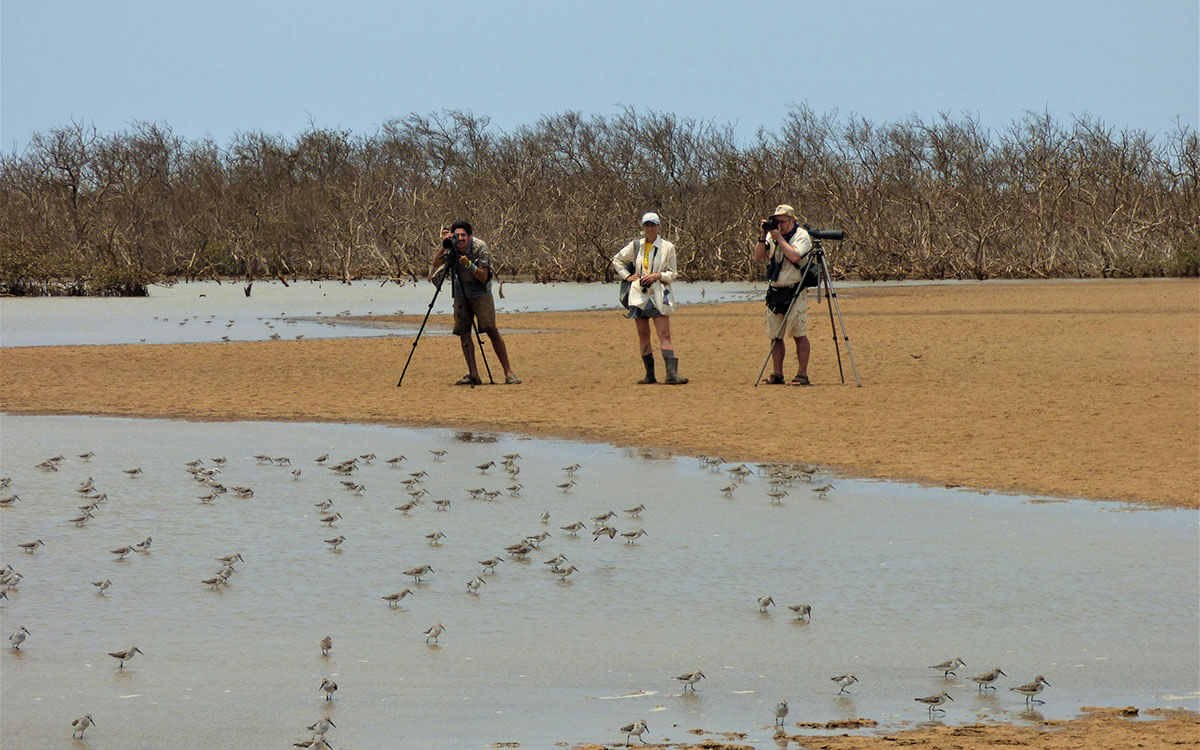
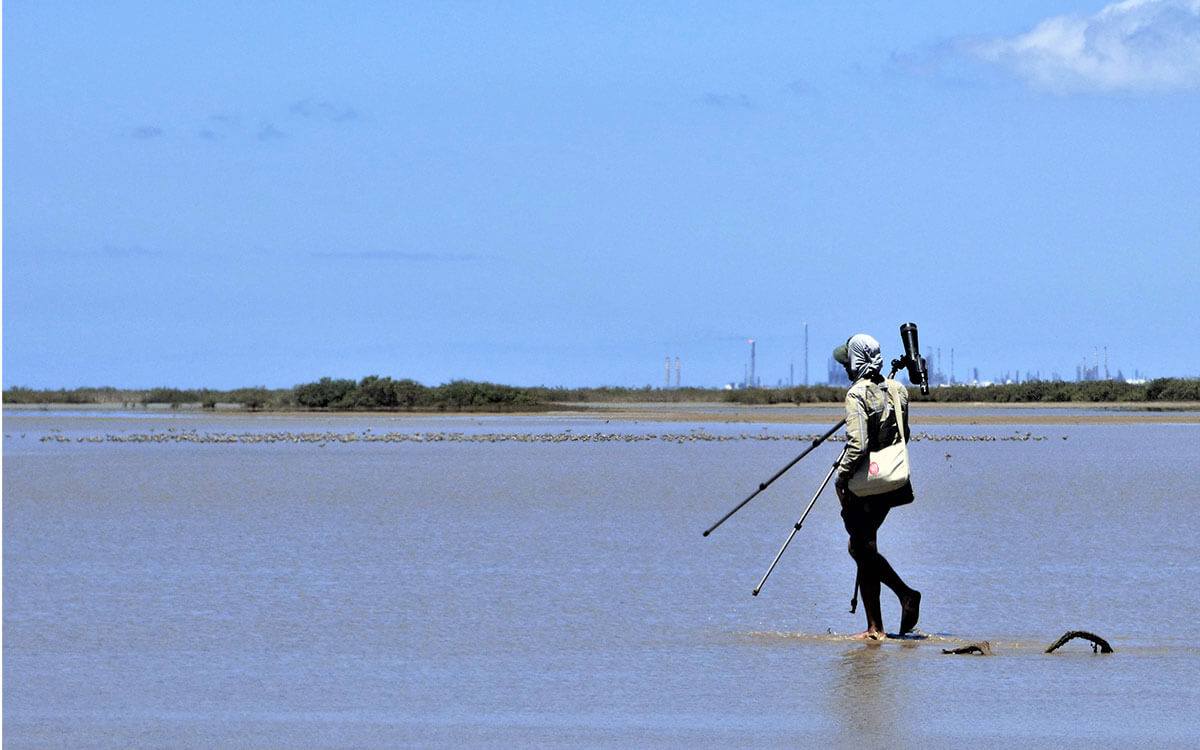
Left: Monitoring activities at Punta Maragüey. Right: Punta Caimán. Photos: Sandra Giner.
These findings have demonstrated the relevance of these two sites for the conservation of migratory shorebirds, but their proximity to the oil refineries and the presence of oil pipe lines in the area makes them vulnerable to the effects of spills. At Punta Caimán, an embankment was built east of the sandbar to carry the oil pipeline to the Paraguaná peninsula into the Punta Cardón refinery. This pipeline caused two hydrocarbon spills that extended to the intertidal flat in March 2019. Later, in August 2019 and March 2020, it was still possible to observe traces of the spill. In these areas the intertidal flats show large areas that are stained with hydrocarbons, and close to the embankment puddles of accumulated spillage are present. Individuals of several species of shorebirds were observed with oil stains on the plumage of the breast and head in March 2019.
Several spillage events have been observed since August 2020 using satellite imagery techniques reported by the Remote Sensoring Lab of the Simón Bolívar University. These spills were from submarine gas and oil pipes, and from the two refineries located in Paraguaná. Between August and December 2020 spills were observed from the Punta Cardón refinery that were carried by currents and reached sites close to Punta Caimán and Punta Maragüey.
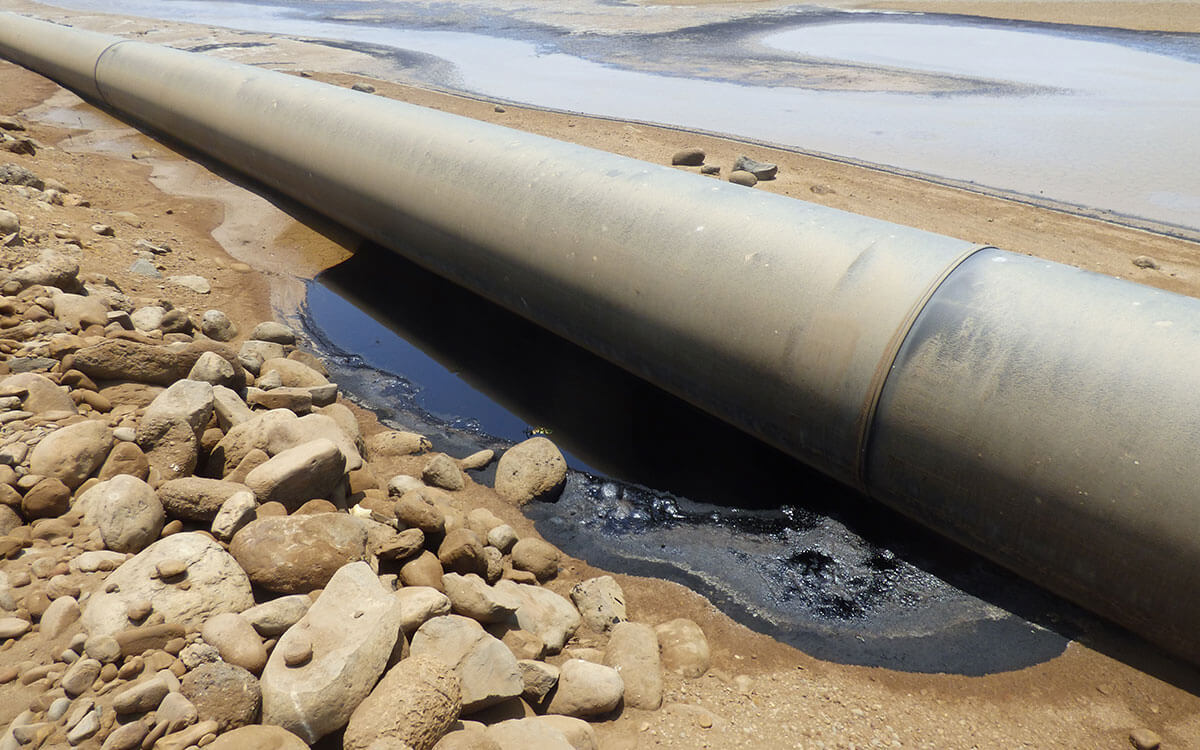
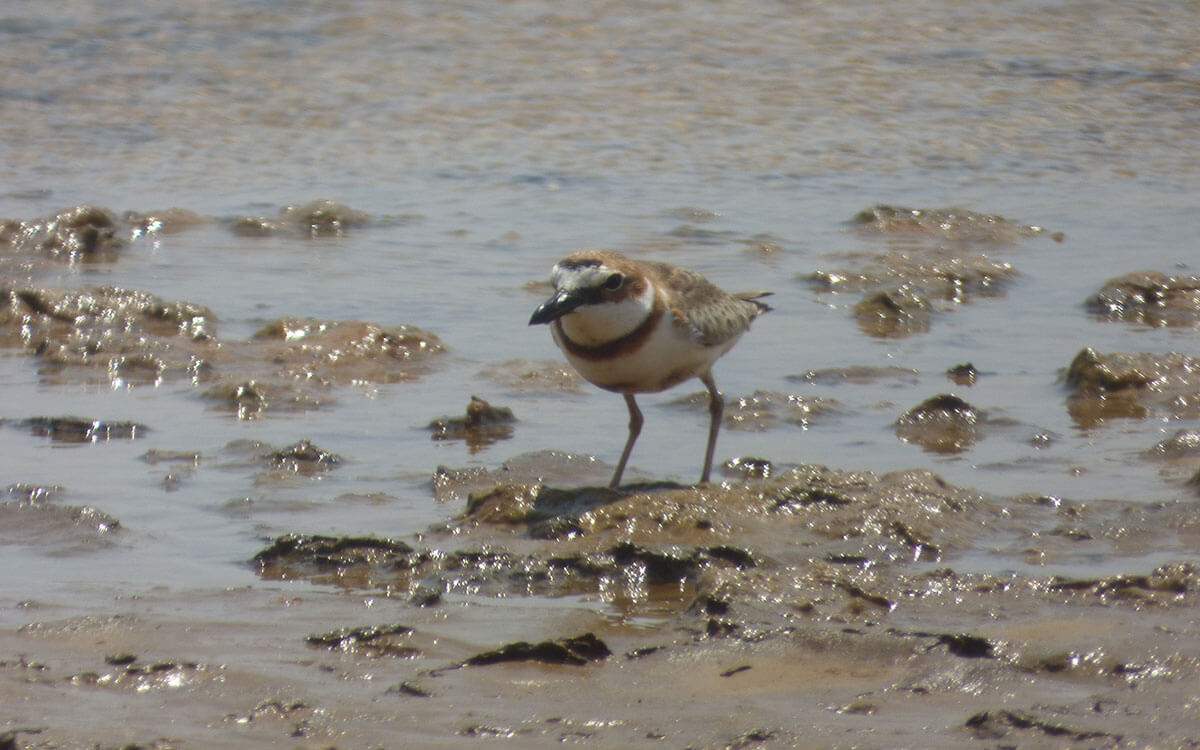
Left: Oil spill at Punta Caimán. Right: Wilson’s Plover with oil stains on the belly. Photos: Sandra Giner.
The fishing community in the area has filed a complaint to the environmental authorities and have also developed public forums that publicize the threats of these spills to local biodiversity. The political crisis in the country has not allowed the necessary mitigation and prevention measures to be implemented in order to avoid further accidents, and they continue to this day. Nor has it been possible to undertake an evaluation of the effects of these accidents on the biodiversity of the area, which would allow to proposed effective actions to guarantee the conservation of the habitats. “Oil spills can have a direct impact on individual birds, but more importantly destroy the habitat that supports shorebird foods, like small crabs and marine worms. Systemic environmental devastation” says Brad Winn Manomet’s Director of Shorebird Habitat Management.
Punta Caimán and Punta Maragüey are two key sites for shorebirds and exhibit all the characteristics required to be considered of regional importance within the WHSRN. This designation would help to promote the sites to local and national governmental institutions, as well as with private organizations and local communities. A focus on establishing alliances and developing appropriate wetland management plans for this area will help to guarantee the conservation of the shorebirds and their habitats.
Cover Photo: Mixed flock of shorebirds in Punta Maragüey. Photo: Sandra Giner.




